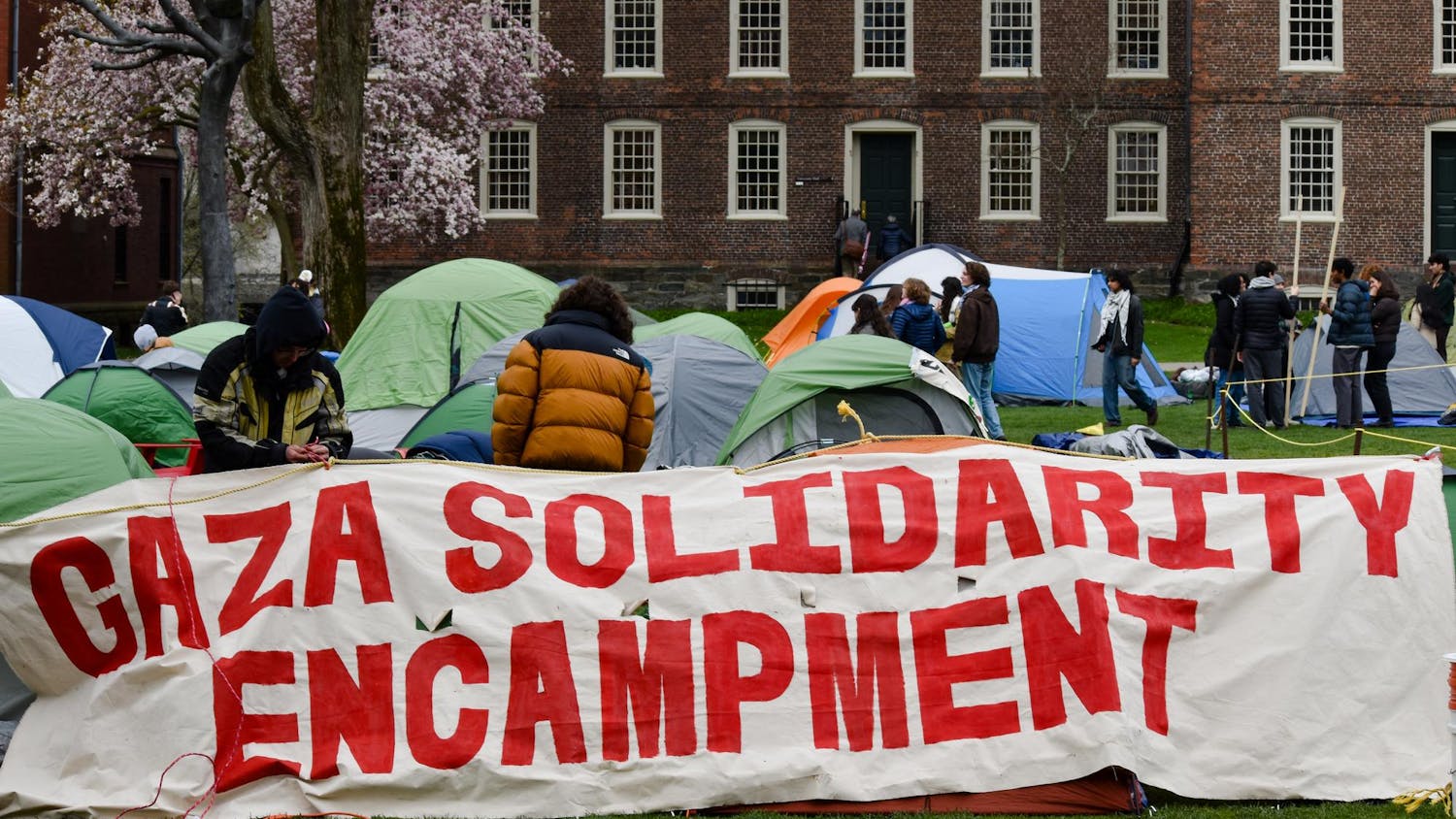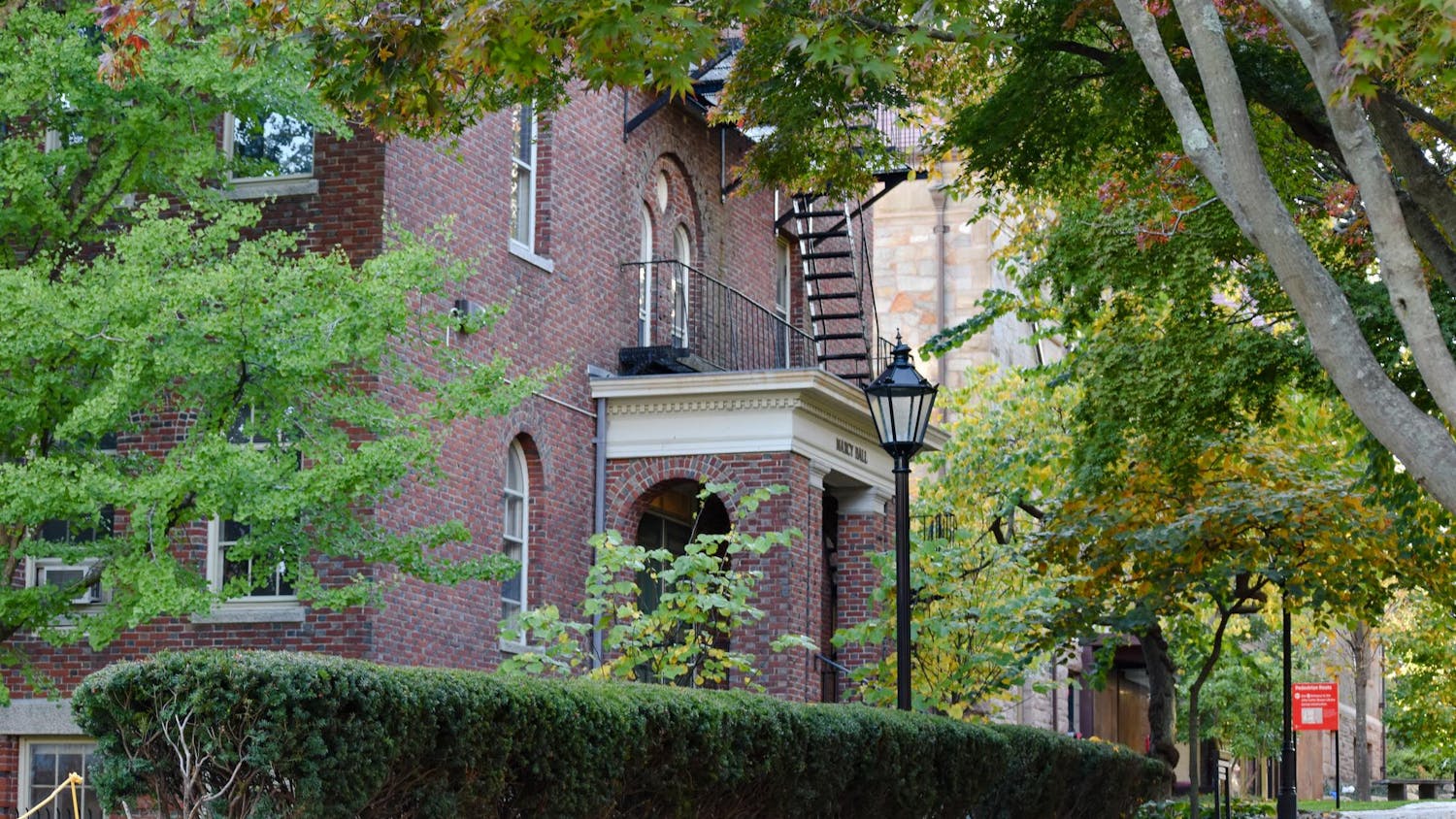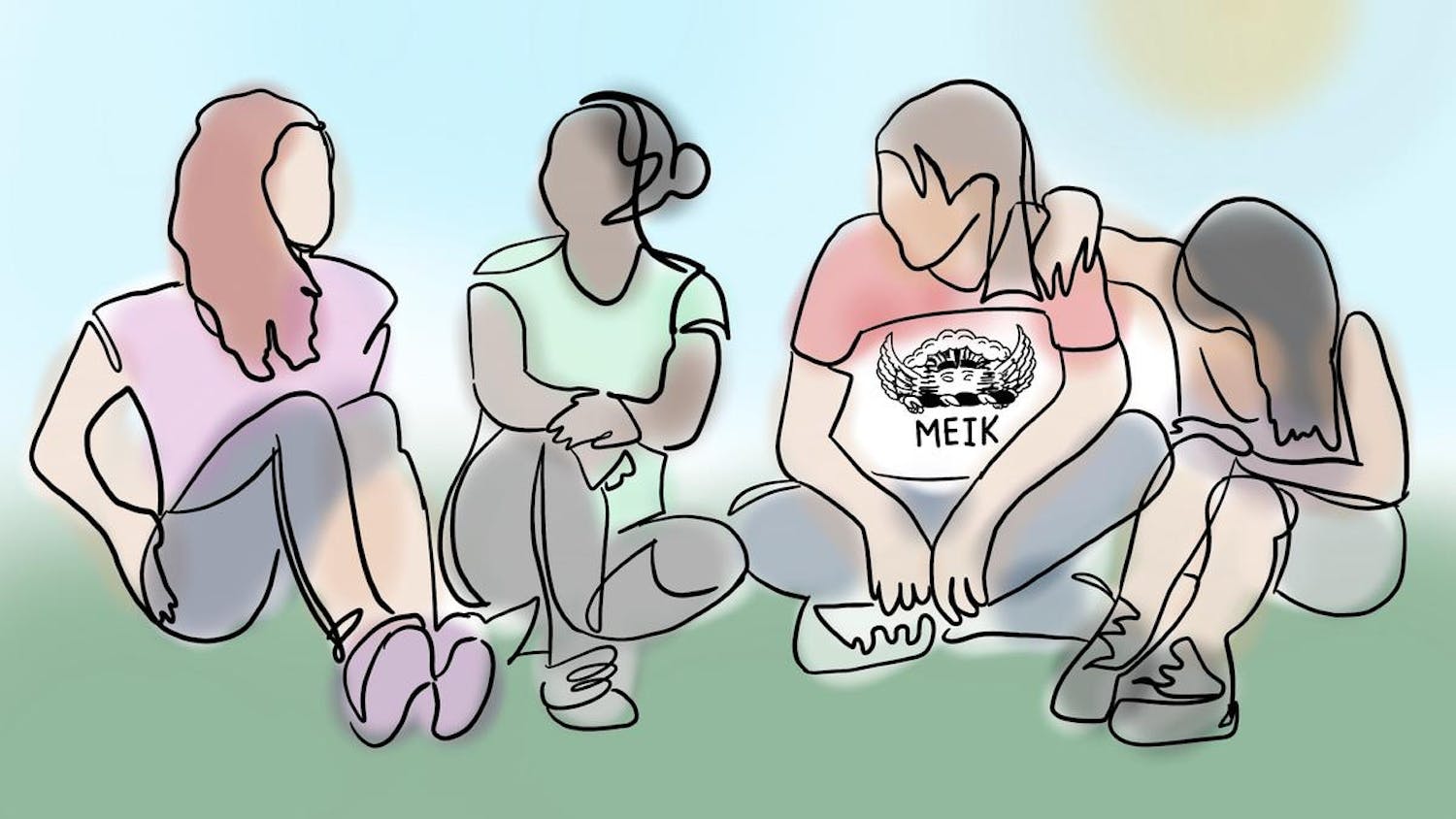Employing archeological pneumonics from “A is for Abydos” down to “Z is for zee end,” Laurel Bestock, assistant professor of archaeology, began her talk on the recent discoveries of the Brown University Abydos Project last night.
In her discussion of the trip for the first time, Bestock said she was glad to be able to share her still “undigested” information with the eager audience in Rhode Island Hall, made up of about 70 students, faculty members and members of Bestock’s archeological team.
The project, created in 2008, allows graduate students to participate in the investigation of areas of the North Cemetery in Abydos in Egypt for five weeks in December and January. The very first kings of Egypt’s first dynasty came from Abydos, a city on the west bank of the Nile River. Interested in these early royals and their cult practices and how ancient culture factors into today’s modernized Abydos with smog, power lines and modern fields, Bestock’s team was able to understand how the past and present interact, she said.
“People come to the site hoping to get pregnant by walking about my excavation,” Bestock said. “How people use it now is still very present.”
The North Cemetery that Bestock’s team explored included several vaults, each of which took three hours to excavate. The Cemetery comprised two levels of architecture, holding artifacts including miniature vessels and a human skeleton with toe prints intact and cavity-free teeth — an indication the deceased had lived in modern times. This skeleton became a private joke about an imagined murder mystery in which a 19th century graduate student in his early 20s was killed on site, Bestock said.
The vaults, despite their mud-brick composition, were very stable until their roofs were removed. The team therefore had to remove areas they knew they couldn’t save, Bestock said.
“I had nightmares about whether or not it was responsible to dig this. I made the choice on the basis that the area is in danger on its own,” Bestock said, referring to the armed looters and Egypt’s precarious political situation. “We were not able to save as much as I hoped we’d be able to.”
Despite these challenges, the team did many early paintings on site, such as one depicting Jesus Christ flanked by Peter and Paul, and another of the Biblical Abraham sacrificing his son Isaac and the hand of God stretching out to stop him, Bestock said. The team also found evidence of how the paintings were made — pots with black material and brushes that had been dipped in them, she said.
Bestock structured her talk by introducing each member of her archeological team and describing their contributions to the dig. She first introduced Kathryn Howley GS, the photographer for the dig, and explained the techniques Howley used to record information and capture more detailed images of each artifact, such as reflectance transformation imaging and infrared photography.
“We really made a point of using new means of recording,” Bestock said.
Bestock’s own husband and dig artist, Simon Sullivan, was next to speak. Responsible for recording an impression of Abydos’ landscape, Sullivan used watercolors instead of conventional photographs to capture “emotions that photographs can’t get,” Bestock said. “I want to be able to communicate the space and give a sense of being for the landscape,” she said.
Moving onto project surveyors John Wieland and Ian Brownstein ’13 and mud brick analyst Serena Love, a postdoctoral fellow in archaeology, Bestock demonstrated the 3-D model that the two surveyors developed. The team hopes to incorporate gaming software that will enable users to virtually walk around the dig site, Bestock said.
Kathryn McBride GS, a project excavator, was responsible for finding numerous pieces of early dynasty pottery. “I’ve been dying to know who built this building,” Bestock said, adding that inscriptions on the ceramics found on site lead to clues on who built the North Cemetery. Bestock said she was particularly interested in how the pots were actually used — they were functional enough for the team to cook with them, she said.
From her experiences in Abydos, Bestock felt both “awe” of the ancient and the “normalcy and reuse” that it can hold, she said. “We want to demonstrate how Abydos was used, and not just for people who are archaeologists who are used to reading maps but rather for people who have come from different backgrounds.”
ADVERTISEMENT




